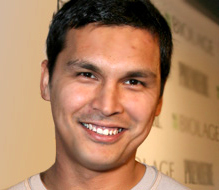
Flipping through channels on television, I came across an HBO film called “Bury My Heart At Wounded Knee,” directed by Yves Simoneau. The film is based on Dee Brown’s book, published in 1971, about the systematic subjugation, displacement and slaughter of the Native American population during the latter half of the 19th century.
The movie begins with the Sioux victory over General Custer at Little Big Horn and gives historical accounts leading up to the killing of hundreds of Lakota men, women and children by the U.S. at Wounded Knee on Dec. 29, 1890. The massacre was one of the most grievous atrocities in U.S. history.
Three characters stand out during the movie, Charles Eastman (Adam Beach), a young, Dartmouth-educated, Sioux doctor representing the alleged success of assimilation; Sitting Bull (August Schellenberg), the Lakota chief who refuses to submit to U.S. government policies designed to strip his people of their land and identity; and Sen. Henry Dawes (Aidan Quinn), one of the architects of U.S.-Indian policies under President Grant’s administration.
Adam Beach, who is Native American, said in an HBO interview that it’s important to show the struggles of Indian people and to tell their story.
The executive producer of the film, Dick Wolf, said the Indian experience is really one of near-genocide and is not a proud moment in our history.
“There is an enormous mirror into the current world, because it is really the story of the United States trying to impose its will on what was essentially a foreign country with a population living a life that was totally different than what this country was becoming,” Wolf said.
The book details the history among the various Native American tribes and their relationships with the U.S. federal government during 1860-1890, beginning with the displacement of the Navajos, the Apaches and other Southwest tribes. Brown outlines the history of U.S. military efforts against Native American chiefs such as Geronimo, Red Cloud, Sitting Bull and Crazy Horse, who tried to save their peoples and resisted the violent crimes imposed on them.
The European colonization of the American continent nearly obliterated the indigenous populations and cultures of the Native Americans. Throughout the 16th-19th centuries, European explorers and colonizers, bringing disease, displacement, enslavement and warfare in their wake, ravaged Native communities.
The explicit policy of land confiscation forced on Native Americans resulted in the deaths of tens of thousands, and tribes were generally relocated to reservation camps where they were forced to assimilate into European-American and “Christian society.”
In the colonizers’ efforts to “civilize” the indigenous population, many Native American children were forbidden to speak their native languages in schools, which were run by Christian missionaries. Often this proved traumatic to Native children, and there are many documented cases of sexual, physical and mental abuses that occurred at these schools on reservation camps.
And it wasn’t until 1924 that the U.S. granted citizenship to Native Americans.
Today there are 561 federally recognized tribal governments in the U.S. that possess the right to form their own government, enforce laws (both civil and criminal), to tax, to establish membership, to license and regulate activities, to zone and to exclude persons from territories. The limitations are the same on U.S. states, for example, neither tribes nor states have the power to make war, engage in foreign relations, or coin money (this includes paper currency).
According to a 2003 U.S. Census Bureau report, a little over one-third of the 2.8 million Native Americans in the U.S. live in three states, California, Arizona and Oklahoma.
As of 2000, the largest tribes in the U.S. were the Navajo, Cherokee, Choctaw, Sioux, Chippewa, Apache, Lumbee, Blackfeet, Iroquois and Pueblo.
“I’ve come to understand where the pain comes from in living on a reservation, at being corralled onto a little piece of land,” said Beach. “The generation that I speak for now is just starting to come out of it, to say, we are proud, we are a strong people.”
The film received many Emmy nominations and won Best Movie for Television. It will air through December. Go to for more information.
“So now I’ve come to understand that we, as a people, have a lot to share with the world,” added Beach. “And when you learn what the Indian peoples have gone through to hold onto their culture and traditions … wow, it’s an amazing story.”
plozano @pww.org








Comments